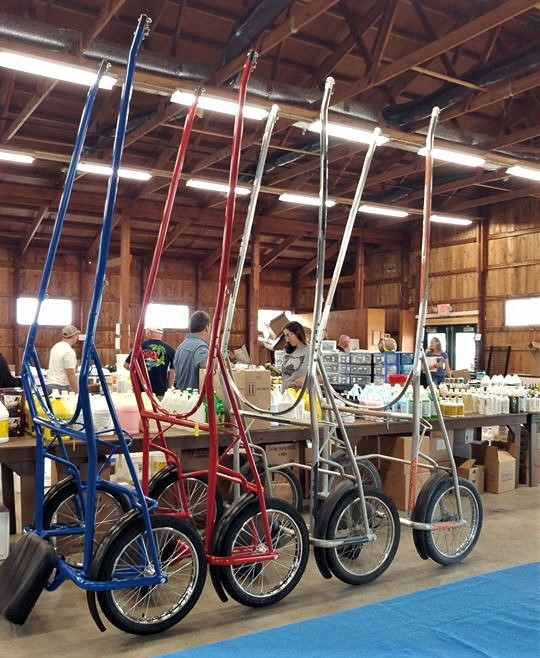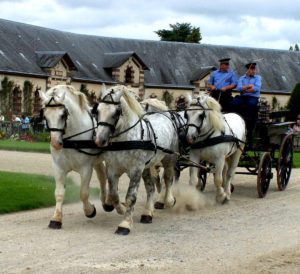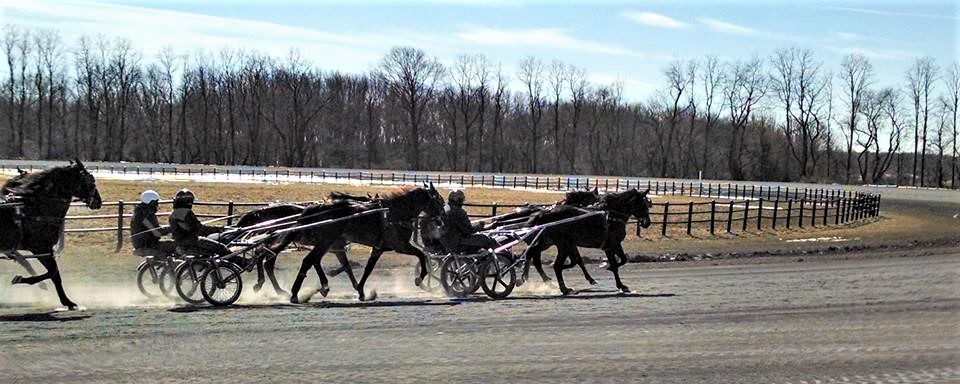Bucks County’s history of champion race horses and trotters is remarkable.
A close friend of Dad’s once owned a bargain basement race horse that actually won at the track. So horses always have been in the background for me, either riding stable horses who wanted nothing more than to be back at the barn or admiring thoroughbreds from afar. In my college days, a friend owned an Appaloosa she kept in her backyard pasture in Gainesville, Fla. She asked me to go out one evening and bring him in. I jumped bareback on him and he took off wildly, throwing me and then chasing me around a tree. Wondering what was taking so long, Sue came out and merely whistled. The beast made a beeline for her. So horses in my life have been both friend and foe.
Curious as always about Bucks County’s 330-year-old history, it fascinates me that it was once a horse racing and breeding heartland. Top thoroughbreds, pacers and trotters came from Bucks. I guess that’s to be expected before autos were rated by horsepower, a term invented in the 18th century to compare the power of steam engines to a draft horse,

In modern times, most remember how Smarty Jones came out of Parx racetrack in Bensalem in 2004 to nearly win the Triple Crown. But Smarty wasn’t Bucks’ only claim to equine fame. One of the greatest was a grey stallion stabled in Bristol Township just after the American Revolution. Messenger, born in England in 1780, already was famous before crossing the pond. He was so well known as a champion racehorse that at his passing on Long Island he was honored as a fallen hero with a military gun salute.
Messenger sired close to 1,000 foals. His bloodlines extend to Seabiscuit, Man O’ War, Secretariat, Seattle Slew and – drum roll please – Smarty Jones. You can also trace Messenger to famed pacers like Echo, Hambletonian and many others.
In 1867, world-renowned trainer and jockey Bud Doble of Bristol constructed a large stable off Otter Street to stable many famous pacers every winter. Among them were superstars Goldsmith Maid, Dexter, Lady Thorn, Snow Ball and Flora Temple. At times 150 racehorses could be seen on the grounds. Doble would allow local boys to exercise them. The kids would long remember being astride the fastest in the world.
In 1909, a 3-year-old trotter by the name of Maggie Winder owned by Jacob Winder of Bristol set four world records for harness racing in a single year. Trotters and pacers are distinguished by their gait.
Meanwhile, racetracks sprouted on farms all over the county. For instance, Lower Makefield had three. The Stapler race track just off Newtown-Yardley Road (Route 332) featured races for all comers. A course on the White Farm near the Delaware Canal enabled visitors to watch drivers in a horse-drawn carts known as “sulkies” work out. “Point of View Stud” farm on Langhorne-Yardley Road was where Uncle Miltie became a champion thoroughbred, earning $1 million in his lifetime.

One of the few back road tracks still in existence in Bucks is on Wiggins Farm off Newtown-Washington Crossing Road (Route 532) just outside Newtown. There trotters can be seen working out daily. Bucks holds the distinction of having one of only two sulky manufacturers left in the United States – Pennsbury Enterprises on Hulmeville Avenue in Penndel. This month, owner Allen Eggert and his team were preparing sulkies for delivery to Australia and Europe where harness racing is very popular.
Raising horses for other reasons also dots the past. In the Quakertown area, Doylestown furniture man Paul Kratz Fisher raised Palomino show horses by the hundreds. Among them was Trigger Jr., one of Roy Rogers’ famous Trigger mount in numerous Hollywood and TV cowboy Westerns of the 1940s and ’50s.

Not too long ago I stopped at the Rushland Post Office in Wrightstown and discovered yet another revelation. The town on Swamp Road is known for the Davis Feed Mill and an abandoned station of the New Hope & Ivyland Railroad. Someone mentioned Rushland in the early 20th century was the home of James Work’s 300-acre Rush Valley Farms, the largest and most important Percheron breeding center in the East. Weighing as much as 2,600 pounds and standing over 6 feet tall, the gray, white and black stallions inspire awe. The breed with a noble bearing originated in the former Perche province of western France. Percherons are muscular, intelligent and willing to haul heavy freight. They were used extensively as war horses in World War I.
In James Work’s era, 70 percent of draft horses in America were Percherons. Since then, their numbers have dwindled. Today they can be seen pulling carriages in touristy areas of cities like New York.
For me these days, it’s highway fun to pass grazing horses in Bucks pastures and pick out the types including thoroughbreds and Percherons. They remind me of our fading heritage.
Sources include “A History of Bristol Borough” by Doron Green published in 1911; the Lower Makefield Historical Society; and “Place Names in Bucks County Pennsylvania” by George MacReynolds published in 1942.

